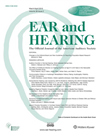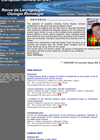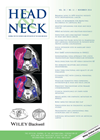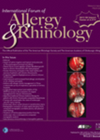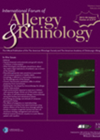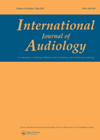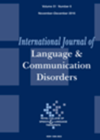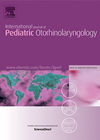
Journal Reviews archive for May 2015
Communication patterns during audiological rehabilitation history taking
Nature of communication among patients, their communication partners and hearing healthcare professionals is an important part of audiological rehabilitation and can have some influence on the patient outcome. As history taking quite often forms the first instance of communication between...
To monitor or not to monitor
This is a report on an e-mail based survey of 1249 otologic surgeons on their practice regarding facial nerve monitoring during ear surgery. The response rate was very low (6.6%). The majority of responders (92%) stated that they did not...
Vestibular screening in occupational medicine
Occupational vestibular disorders carry a high medico legal and economic burden. The occupational medicine physician must rely on rapid, non-invasive, economical and reproducible screening tests. This article compares the simplified caloric test of Veits (CTV) with the skull vibration-induced nystagmus...
Hyperbaric oxygen therapy and flap reconstruction: does it help?
This is a multicentresite retrospective review from four clinics in the USA on patients who received radical debridement and free flap reconstruction for osteoradionecrosis (ORN) between 1 Jan 1995 and 30 June 2011. Patients were stratified divided based on having...
Back to basics: nasendoscopy beats CT, again!
There are few otolaryngologists (or patients) who have not been confronted with a computed tomography scan referring to a deviated septum. In a very similar way to the accidental findings of sinus mucosal thickening, the clinician is left in a...
Not so innocent, after all: a meta-analysis of the effects of intranasal corticosteroids on growth
The use of intranasal corticosteroids has revolutionised the management of allergic rhinitis and rhinosinusitis and there is now significant evidence of their safety. The problem with side-effects is that clinical studies are designed to demonstrate efficacy, but are underpowered to...
Hearing protection and hearing loss
This study examined the interaction of hearing protection for noise reduction and hearing loss with speech recognition performance. Forty five subjects with four hearing loss profiles were fitted with two different level dependent hearing protectors (circumaural and inserts) in two...
Hearing protectors and speech perception
This study tested 31 subjects using hearing protectors by maintaining a constant intensity level for the speech signal while varying background noise levels. The goal was to use this test to detect speech perceptual abilities under different hearing protectors –...
Relationship between ART and language development
Assisted Reproduction Technology (ART) and especially more invasive techniques of ART may be associated with an increase in neurodevelopmental problems including language delay. Some studies have reported slightly worse perinatal outcomes of IVF babies compared to naturally conceived babies. The...
Specific language impairment in bilingual vs monolingual children
Research has focused mainly on the specific language impairment (SLI) in monolingual children. This article focuses attention on the SLI in bilingual children. The study was conducted with bilingual children from Luxembourg and monolingual children from Portugal who all had...
Bone anchored hearing devices in very young children
This paper presents results of BC devices in very young children and helps inform an honest discussion of risks / benefit with prospective parents. The authors of this article from Starship Children’s Hospital, Auckland, New Zealand have a series of...
Noise’s effect on ageing memory
Working memory is used everyday by individuals of all ages. The authors of this study sought to compare the effect of background noise on the memory of either young adults or middle aged adults. They did this by recruiting 10...

